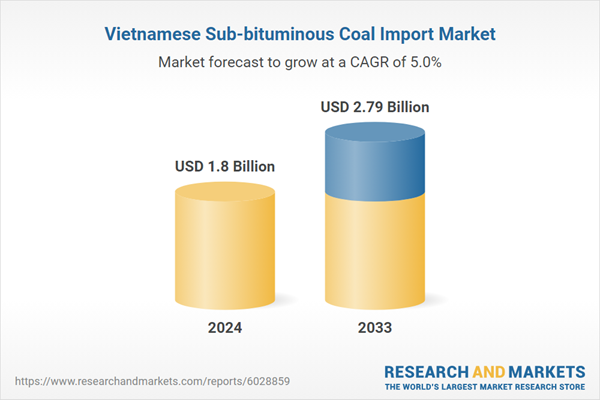Due to its low cost and reduced pollutant emissions, sub-bituminous coal is primarily used in power plants as a fuel to support thermal power generation. It is also commonly used as boiler fuel in industries such as cement production and paper manufacturing. Its moderate heat output makes it suitable for mid- to low-temperature processes requiring steady heat but unsuited for high-temperature metallurgical applications. According to the publisher, sub-bituminous coal is widely used in coal-fired power plants for boiler combustion, contributing to power generation. Despite its lower heat value and combustion efficiency compared to bituminous and anthracite coal, the abundant reserves and low cost make sub-bituminous coal significant in the global energy market. Also, less sulfur emissions than bituminous coal makes it applied in countries with higher environment regulations.
The upstream sector for sub-bituminous coal includes coal mining and processing, while downstream industries encompass power, paper, cement, and chemical sectors. Mining typically involves surface or underground extraction, followed by sorting, washing, and processing to meet industrial standards. Equipment designed for large-scale manufacture and suitable technology are usually required. In order to improve combustion efficiency and reduce pollution emissions, modern thermal power plants are usually equipped with advanced combustion control systems and flue gas desulfurization equipment.
Major producers of sub-bituminous coal include Indonesia, Australia, the United States, and China. These countries' abundant reserves and established mining technologies position them as major global suppliers, with Indonesia being a key exporter due to its low-cost extraction and favorable geographic location, mainly exporting to Southeast Asian countries and India.
Vietnam, while having coal reserves, primarily focuses on anthracite mining. Sub-bituminous coal reserves are limited, creating a high dependency on imports for Vietnam's market demand. As an economical and relatively environmentally friendly option, sub-bituminous coal is in growing demand in Vietnamese thermal power plants. The analysis shows that with Vietnam's rapid industrialization and government initiatives to improve infrastructure and expand the power network, energy demand is on the rise, fueling an increase in sub-bituminous coal imports.
According to the publisher, in 2023, Vietnam's total sub-bituminous coal imports reached approximately USD 1.7 billion. By August 2024, imports had already surpassed USD 1.2 billion, marking year-on-year growth. Key suppliers to Vietnam between 2021 and 2024 included Indonesia, Australia, and Singapore, with primary exporting companies such as SUEK AG, China Huadian Engineering Co., and PT Bayan Resources Tbk. Major importers in Vietnam's power sector include Nghi Son 2 Power Limited Liability Company, Vinh Tan 4 Thermal Power Plant, and other power plants and supply stations.
As Vietnam's economy continues to grow and industrialization progresses, the publisher forecasts an expanding sub-bituminous coal market, with imports set to keep rising due to limited domestic production capacity.
Topics covered:
- The Import and Export of Sub-bituminous Coal in Vietnam (2021-2024)
- Total Import Volume and Percentage Change of Sub-bituminous Coal in Vietnam (2021-2024)
- Total Import Value and Percentage Change of Sub-bituminous Coal in Vietnam (2021-2024)
- Total Import Volume and Percentage Change of Sub-bituminous Coal in Vietnam (2024)
- Total Import Value and Percentage Change of Sub-bituminous Coal in Vietnam (2024)
- Average Import Price of Sub-bituminous Coal in Vietnam (2021-2024)
- Top 10 Sources of Sub-bituminous Coal Imports in Vietnam and Their Supply Volume
- Top 10 Suppliers in the Import Market of Sub-bituminous Coal in Vietnam and Their Supply Volume
- Top 10 Importers of Sub-bituminous Coal in Vietnam and Their Import Volume
- How to Find Distributors and End Users of Sub-bituminous Coal in Vietnam
- How Foreign Enterprises Enter the Sub-bituminous Coal Market of Vietnam
- Forecast for the Import of Sub-bituminous Coal in Vietnam (2024-2033)
Table of Contents
Companies Mentioned
- SUEK AG
- CHINA HUADIAN ENGINEERING CO.
- PT BAYAN RESOURCES TBK.
- NGHI SON 2 POWER LIMITED LIABILITY COMPANY
- VINH TAN 4 THERMAL POWER PLANT
- NHÀ MÁY NHIỆT ĐIỆN VĨNH TÂN 4
Methodology
Background research defines the range of products and industries, which proposes the key points of the research. Proper classification will help clients understand the industry and products in the report.
Secondhand material research is a necessary way to push the project into fast progress. The analyst always chooses the data source carefully. Most secondhand data they quote is sourced from an authority in a specific industry or public data source from governments, industrial associations, etc. For some new or niche fields, they also "double-check" data sources and logics before they show them to clients.
Primary research is the key to solve questions, which largely influence the research outputs. The analyst may use methods like mathematics, logical reasoning, scenario thinking, to confirm key data and make the data credible.
The data model is an important analysis method. Calculating through data models with different factors weights can guarantee the outputs objective.
The analyst optimizes the following methods and steps in executing research projects and also forms many special information gathering and processing methods.
1. Analyze the life cycle of the industry to understand the development phase and space.
2. Grasp the key indexes evaluating the market to position clients in the market and formulate development plans
3. Economic, political, social and cultural factors
4. Competitors like a mirror that reflects the overall market and also market differences.
5. Inside and outside the industry, upstream and downstream of the industry chain, show inner competitions
6. Proper estimation of the future is good guidance for strategic planning.

LOADING...
Table Information
| Report Attribute | Details |
|---|---|
| No. of Pages | 80 |
| Published | November 2024 |
| Forecast Period | 2024 - 2033 |
| Estimated Market Value ( USD | $ 1.8 Billion |
| Forecasted Market Value ( USD | $ 2.79 Billion |
| Compound Annual Growth Rate | 5.0% |
| Regions Covered | Vietnam |
| No. of Companies Mentioned | 6 |









